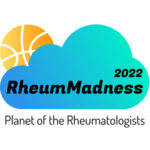
What is a generic medication? It can be defined as a form of alternative, but allegedly biochemically identical, medicine for which blood levels are within a certain percentage of the ethical pharmaceutic it replaces, a certain percentage of time. That definition, of course, does not address formulation and additives—the nature of which is usually quite elusive to the patient and prescribing physician.
Beyond the question of efficacy, however, is that of the safety net established with use of ethical pharmaceuticals. No one bats 100%, and we need to function as a team, catching lapses at the earliest possible time. The constancy of ethical pharmaceutical formulation and color coding had allowed facile recognition of dispensing errors.
There is no longer a facile mechanism to verify that the dispensed medication is that which was actually prescribed.
This issue was highlighted when a patient presented with erythema multiforme subsequent to ingesting a newly substituted generic. Unfortunately, the pharmacy denied retention of the batch number—to confirm that the medication was otherwise identical to that ordered by the physician. Thus, we were unable to rule out the prescribed medication as the cause of the drug reaction and had to delete future use of that otherwise very effective intervention.
Ethical pharmaceuticals’ standard coloration allowed development of charts that facilitated their recognition. This has been lost with generics, for which there is no color standardization and for which substitutions are so frequent. There is no longer a facile mechanism to verify that the dispensed medication is that which was actually prescribed.
This is not a clarion for return to use only of ethical pharmaceuticals, but rather is the suggestion that dispensing pharmacies provide a color chart of the generics they are substituting, especially for the generic they are dispensing that month. Thus, we can more effectively work together to ensure patient safety.
Bruce Rothschild, MD, is professor of medicine at Northeast Ohio Medical University and a research associate at the Carnegie Museum. He is a Fellow of the American College of Physicians, the ACR and Society of Skeletal Radiology, and was elected to the International Skeletal Society. While he has been recognized for his research in musculoskeletal disease, he is fundamentally a clinical rheumatologist seeking to improve the safety net for the patients who come under our care.

